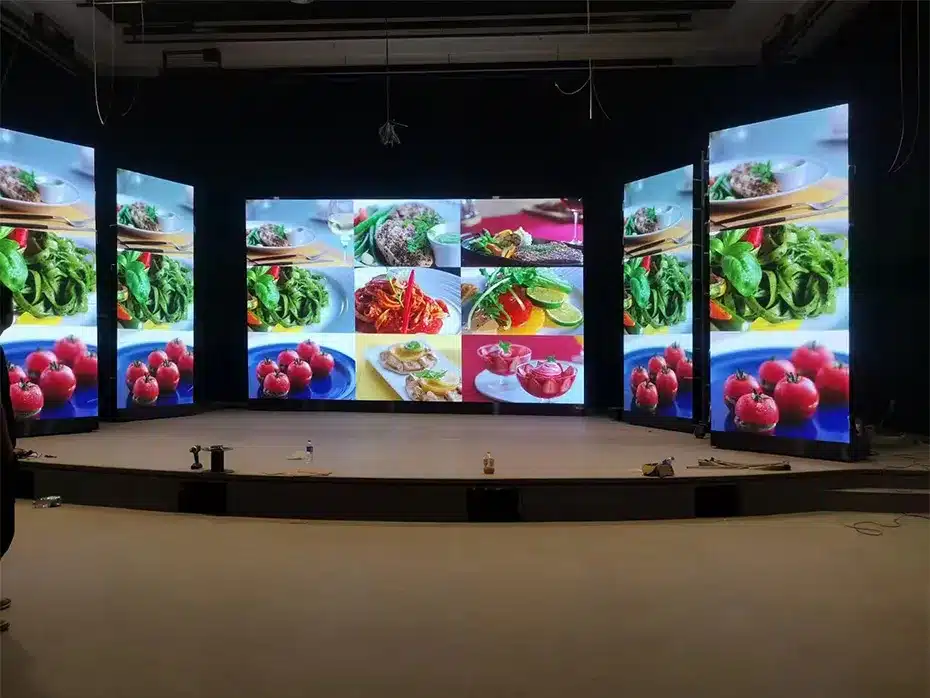
LED Knowledge
Understanding LED Display Gray Levels: The Secret to Stunning Visuals
As 5G, AI, and smart technology rapidly advance, LED displays are becoming larger, sharper, and more vibrant than ever before. However, there’s one crucial factor that determines how realistic and detailed an LED screen appears—gray levels.
As 5G, AI, and smart technology rapidly advance, LED displays are becoming larger, sharper, and more vibrant than ever before. However, there’s one crucial factor that determines how realistic and detailed an LED screen appears—gray levels.
But what exactly is gray level in LED screens?
How does it affect image clarity and color accuracy?
And why should you care when choosing an LED display?
Let’s unlock the mystery behind LED gray levels and see how they transform the way we experience visuals! 🚀
1️⃣ What is Gray Level in LED Displays? 🤔
Think of a sunrise over the ocean—the sky gradually shifts from deep blue to soft orange, then to golden yellow. The smoothness of these transitions is what gray levels control in an LED screen.
In simple terms, gray level refers to the number of brightness variations an LED display can show from black to white.
📌 The Science Behind Gray Levels:
- A higher gray level means smoother color transitions and more detailed images.
- Gray levels are measured in bits, and each additional bit doubles the number of brightness levels.
- For example:
- 8-bit display = 256 levels (2⁸) of brightness
- 10-bit display = 1,024 levels (2¹⁰) of brightness
- 12-bit display = 4,096 levels (2¹²) of brightness
- 16-bit display = 65,536 levels (2¹⁶) of brightness
📸 [Image showing a gradual grayscale transition from black to white]
2️⃣ How Do Different Gray Levels Affect Image Quality? 🏆
To truly understand why gray levels matter, let’s compare low vs. high gray level displays:
📌 Low Gray Levels (8-bit or lower):
❌ Harsh transitions between shades (like “blocky” shadows in a low-quality photo).
❌ Less color depth, leading to washed-out images.
❌ Struggles with darker shades, losing details in shadows.
📸 [Example: A sunset with visible color banding and rough transitions]
📌 High Gray Levels (10-bit, 12-bit, 16-bit):
✅ Smooth color transitions (shades blend seamlessly).
✅ Richer and more accurate colors.
✅ Detailed shadows and highlights, even in low-light images.
📸 [Example: A high-quality sunset image with smooth color transitions]
Real-Life Example:
Imagine watching a sports event on a low gray-level LED screen—the grass might look patchy, and player uniforms lack vibrancy. But with a high gray-level LED, every detail from the jersey textures to the stadium lights will look stunningly realistic.
📸 [Comparison of low vs. high gray level images]
3️⃣ How to Identify and Choose the Right Gray Level for Your LED Display? 🎯
📌 1. Determine the Purpose of Your LED Display
- Outdoor advertising & billboards → Low gray levels (8-bit) are acceptable.
- Indoor conference rooms, retail stores → 10-bit gray levels provide better clarity.
- Luxury showrooms, high-end displays, theaters → 12-bit to 16-bit ensures cinema-quality visuals.
📌 2. Consider the Viewing Distance
- Far-viewing distance (billboards) → Lower gray levels are fine.
- Close-up screens (museums, exhibitions) → Higher gray levels are a must to prevent pixelation.
📌 3. Check for Color Banding Issues
- If a screen shows visible bands in gradients, it has low gray levels.
- High gray-level LED displays eliminate banding and produce true-to-life colors.
📸 [Image comparing color banding on low vs. high gray level displays]
4️⃣ The Future of LED Displays with High Gray Levels 🚀
As technology evolves, LED screens are moving toward ultra-high gray levels for unparalleled realism.
💡 Trends in High Gray Level Displays:
🔹 AI-powered color correction → Dynamic gray level adjustments for true-to-life visuals.
🔹 HDR-compatible LED walls → Combining high contrast & gray levels for cinematic quality.
🔹 MicroLED & MiniLED technology → High-resolution, 16-bit gray levels in ultra-slim displays.
📸 [Future LED display technologies and HDR advancements]
5️⃣ Why Gray Levels Matter: Final Thoughts 🎯
✅ Higher gray levels = smoother colors, more details, and a better visual experience.
✅ Choose the right gray level based on usage, distance, and content quality.
✅ Future LED displays will feature AI-driven optimizations and HDR imaging for unmatched clarity.
📢 Ready to upgrade to a high gray-level LED display? 🚀
💬 Drop your questions below and let’s discuss! 👇👇👇
🔥 Bookmark & share this guide with your team! 🔥





